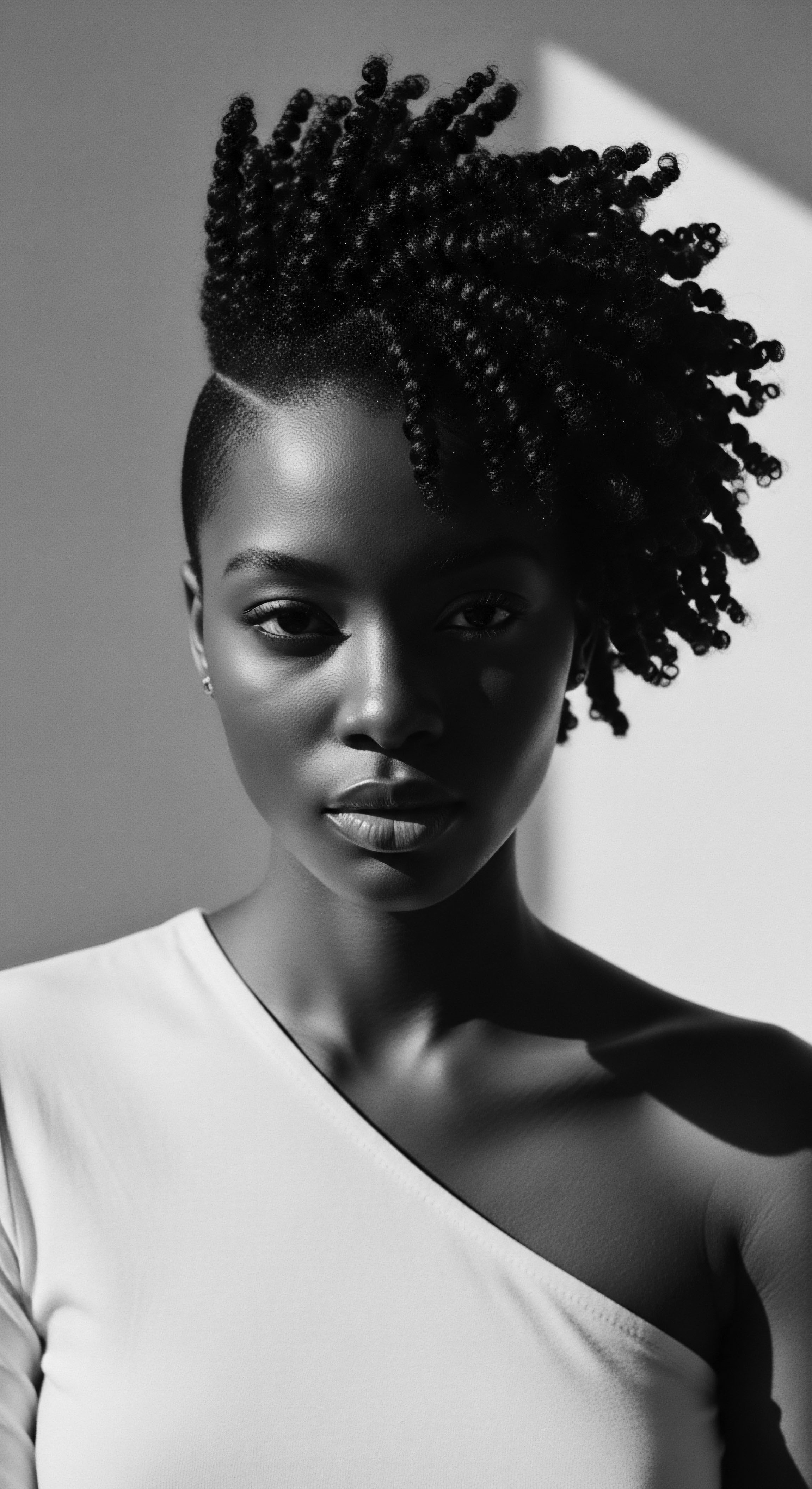
Roots
Consider for a moment the quiet moments before dawn, when the world slumbers and dreams unfold. For those whose lineage carries the legacy of textured hair, these hours of rest are not merely a pause; they are a profound engagement with history, biology, and the careful stewardship of a crowning glory. The way sleep touches textured hair, in its myriad coils, kinks, and waves, is a dialogue between the elemental forces that shape our strands and the ancestral wisdom passed through generations. This exploration seeks to honor that dialogue, inviting a deeper appreciation for the interplay of rest, hair health, and the rich heritage that binds them.

Hair’s Inner Landscape and Nocturnal Vulnerability
The very architecture of textured hair, with its elliptical cross-section and unique curl pattern, grants it magnificent versatility yet also imparts a distinct fragility. Unlike straight strands, which descend smoothly, coily and kinky hair twists and turns, creating points of vulnerability along its shaft. These natural bends and curves, while visually striking, make textured hair more prone to tangling and breakage, especially when subjected to friction. As we drift into sleep, the unconscious movements of tossing and turning against common pillow fabrics, such as cotton, can create significant mechanical stress.
This friction acts as an abrasive force, disrupting the cuticle layer, which is the outermost protective sheath of the hair strand. When the cuticle is lifted or damaged, the hair’s inner cortex, responsible for its strength and elasticity, becomes exposed. This exposure leads to moisture loss, increased frizz, and ultimately, compromised integrity of the strand.
From an ancestral vantage point, communities understood these inherent characteristics not through microscopes, but through observation and accumulated wisdom. The need to protect hair during rest was not a modern invention but an intuitive response to the hair’s inherent nature and the demands of daily life. The wisdom of these early care practices, born from necessity and a deep connection to the body’s rhythms, laid the groundwork for contemporary understandings of nocturnal hair preservation.
The very structure of textured hair, with its unique bends and turns, carries an intrinsic delicacy, particularly susceptible to friction during periods of unconscious rest.
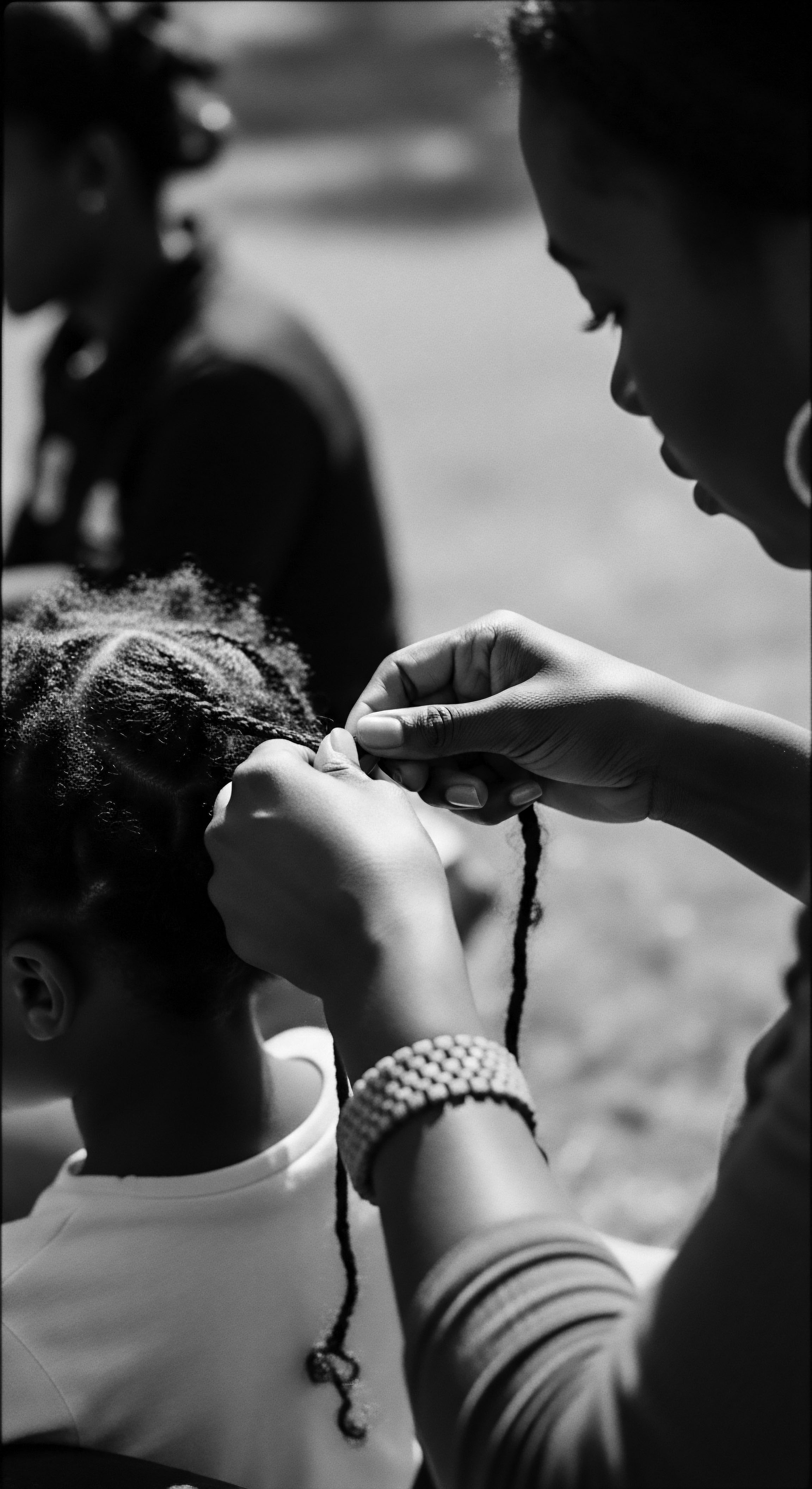
Ancient Echoes in Hair’s Classification
While modern hair classification systems categorize textures by numerical and alphabetical designations, the heritage of textured hair care suggests a more fluid, experiential understanding. Ancestral communities did not necessarily dissect hair into precise types in the same way modern science does. Instead, their understanding was holistic, often linking hair characteristics to lineage, spiritual beliefs, and communal identity. The way hair behaved during sleep, its propensity to knot or retain moisture, likely informed daily practices and the selection of protective coverings.
For instance, hair that readily absorbed moisture from the night air, or that became excessively tangled, would have necessitated specific protective measures, leading to the development of wraps and coverings tailored to maintain its well-being. This observational wisdom, passed down through oral traditions and communal practice, served as an organic classification system, guiding individuals in their daily and nightly care rituals.

A Lexicon of Care ❉ Words from the Past
The language surrounding textured hair care, particularly concerning nighttime rituals, carries echoes of ancestral practices. Terms like Wrapping, Binding, and Covering were not just actions; they were expressions of care, protection, and reverence for the hair. In many West African societies, for instance, hair was seen as a conduit to the divine, a spiritual antenna, and its careful maintenance, including its preservation during sleep, was part of a larger spiritual and communal practice (Byrd & Tharps, 2001).
The tools and substances used—from natural oils extracted from indigenous plants to finely woven cloths—were integrated into a daily lexicon of self-stewardship. These words, imbued with the spirit of collective knowledge, speak to a time when hair care was not merely cosmetic but a fundamental aspect of holistic health and cultural expression.
- Duku ❉ A traditional headwrap from Ghana, often used for protection and cultural expression.
- Doek ❉ A term for headwrap in Namibia and other Southern African regions, reflecting identity and status.
- Binyeo ❉ While primarily East Asian, these Korean silk headpieces signify a broader historical practice of securing and adorning hair, often with protective qualities.
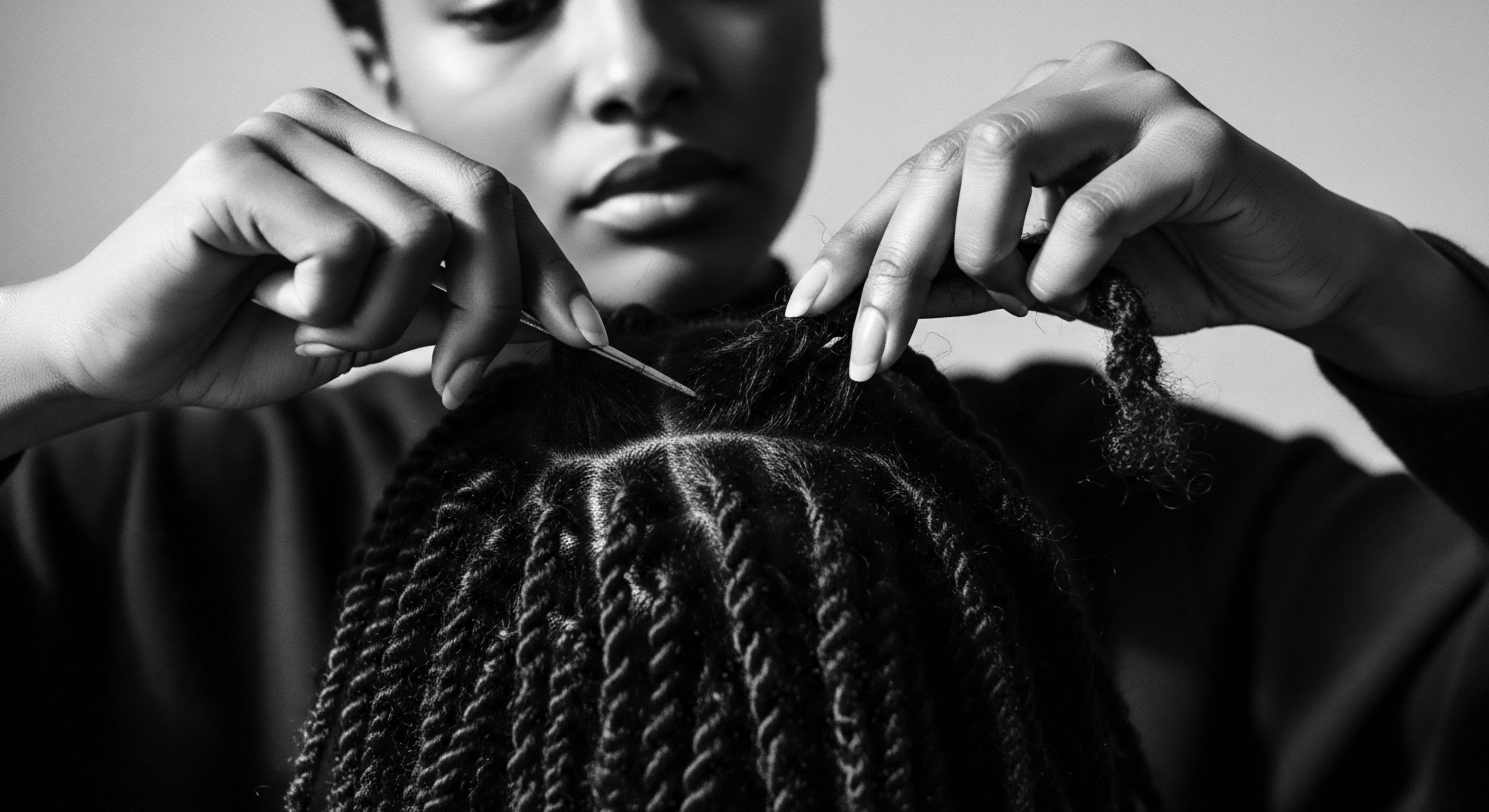
The Rhythms of Growth and Ancestral Influences
Hair growth follows distinct cycles ❉ anagen (growth), catagen (transition), and telogen (rest). While these biological rhythms are universal, environmental and nutritional factors, deeply intertwined with ancestral lifestyles, played a significant part in hair health. Access to nutrient-rich foods, often from local and seasonal sources, would have supported robust hair growth. Conversely, periods of scarcity or forced displacement, as experienced by enslaved Africans, would have impacted hair vitality, making careful preservation even more critical.
The historical record reveals how, during enslavement, limited resources and harsh treatment compelled Black women to seek innovative ways to protect their hair from damage and breakage, including through the use of rudimentary coverings at night (Hype Hair, 2023). This profound necessity, born from extreme adversity, underscored the deep-seated understanding that even during sleep, the hair required diligent attention to maintain its integrity and resist the forces that sought to diminish it.
The very act of preserving hair at night, therefore, became a quiet act of resistance, a testament to resilience, and a continuation of ancestral practices in the face of systemic dehumanization. It was a means of asserting self-worth and cultural continuity, even in the darkest of times.
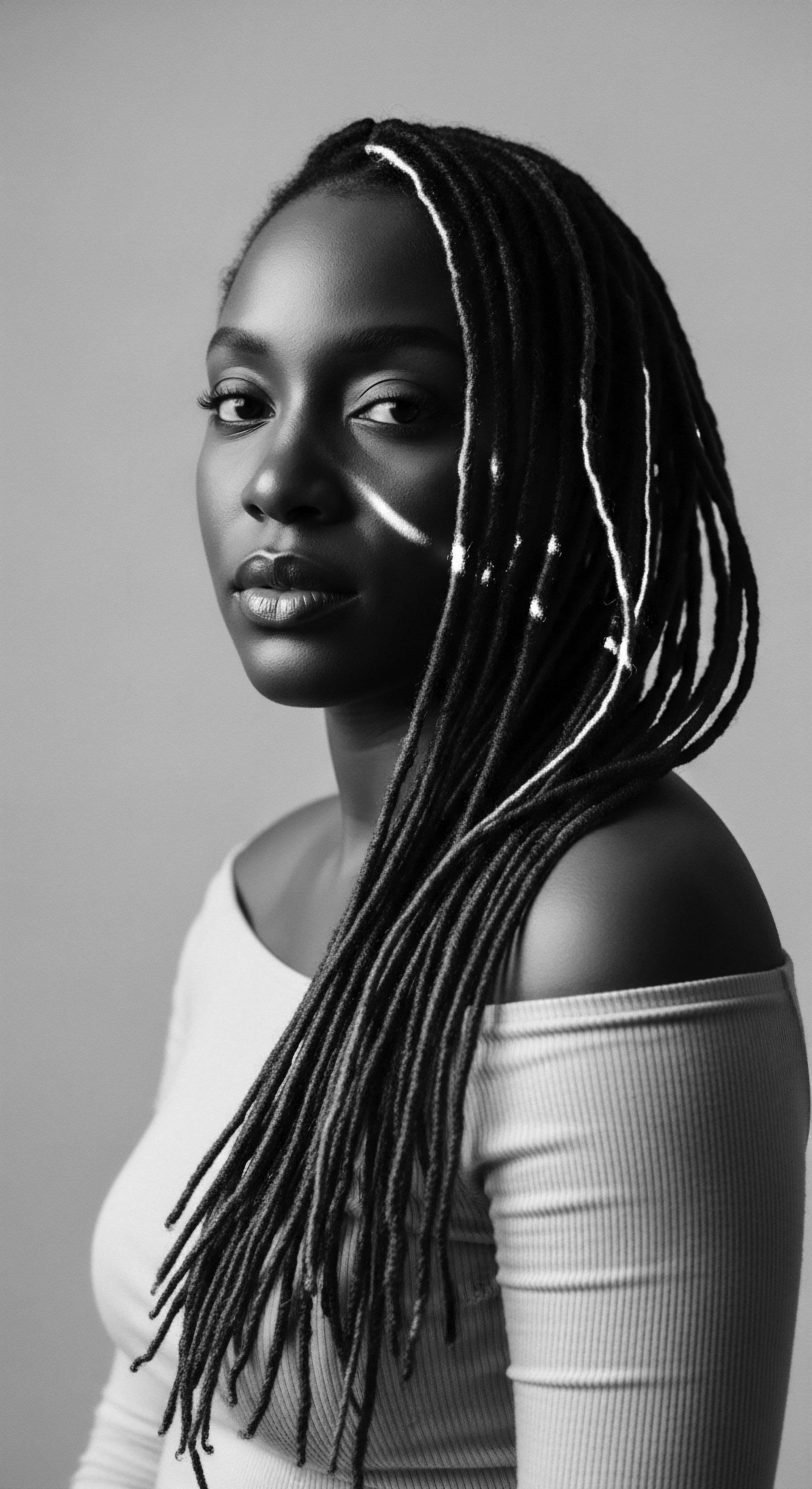
Ritual
As we move from the foundational understanding of textured hair’s nature, we enter the realm of applied wisdom—the rituals that have shaped its care through generations. For those who walk with the legacy of textured hair, the nightly preparation for sleep is not merely a chore but a tender, deliberate act. It is a moment when the day’s exertions yield to the quiet work of preservation, a practice that reflects a deep respect for the hair’s intrinsic needs and the continuity of ancestral knowledge. This section invites a deeper look into these practices, acknowledging their evolution and their enduring power to shape our experience of hair health.
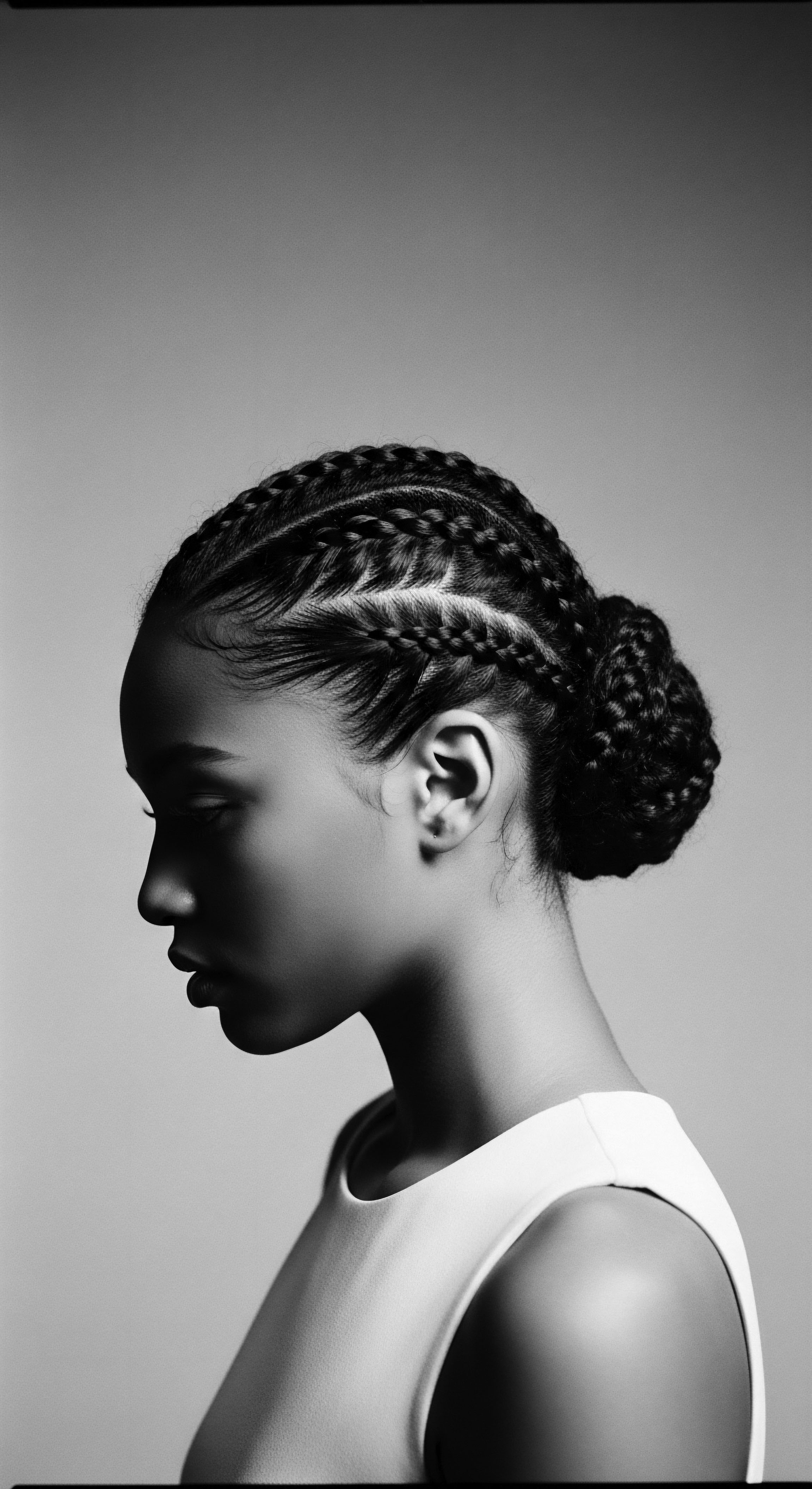
Protective Styling ❉ Echoes in the Night
The practice of protective styling, so central to textured hair care, finds its most profound application in the hours of sleep. Styles such as braids, twists, and cornrows, far from being mere aesthetic choices, possess a deep ancestral heritage rooted in the practical need to safeguard the hair. These intricate configurations minimize manipulation, reduce tangling, and keep delicate ends tucked away from abrasive surfaces. Historically, such styles served not only as markers of identity, status, and community affiliation in various African civilizations but also as a pragmatic means of maintaining hair health over extended periods, thus reducing the need for frequent styling and minimizing damage (Hype Hair, 2023).
Consider the meticulous care involved in creating a set of braids or twists that would last for days or even weeks. The effort invested meant that preserving the style overnight was paramount. A study examining hair care practices notes that protective steps, such as wearing satin bonnets or using satin pillowcases while sleeping, are recommended regardless of hairstyle to reduce hair loss and maintain moisture.
This continuity of purpose, from ancient braiding techniques to modern silk coverings, underscores a timeless understanding of hair’s vulnerability during rest. The careful arrangement of strands before sleep ensures that the hair remains undisturbed, its natural oils sealed in, and its integrity preserved for the waking hours.
Protective styles, born from ancestral ingenuity, find their truest purpose in safeguarding textured hair through the quiet hours of the night.
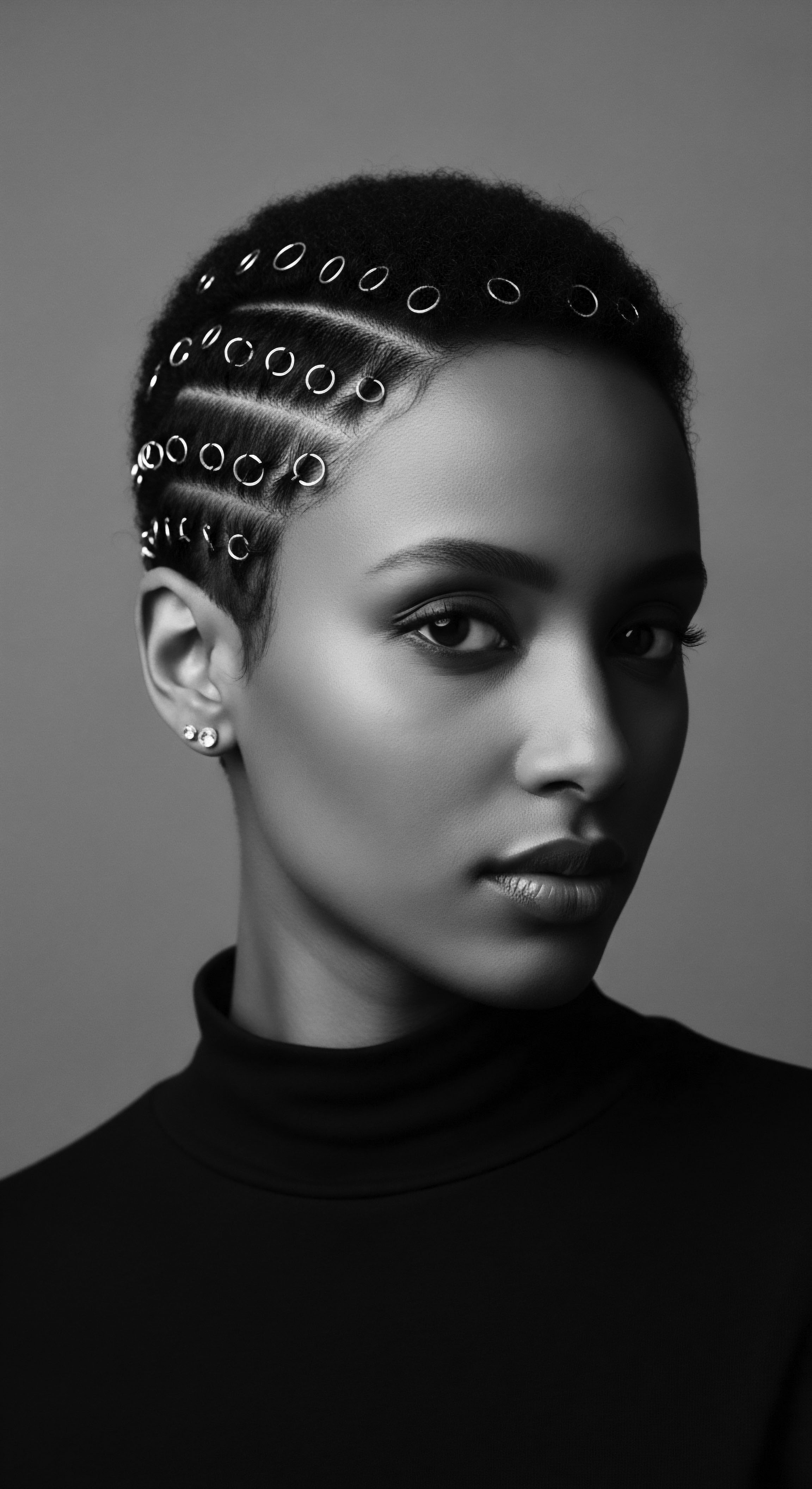
Natural Styling and Nighttime Definition
The pursuit of definition in natural textured hair is a journey that often begins the night before. Techniques that encourage the natural curl pattern to clump and hold its shape—such as finger coiling, Bantu knots, or two-strand twists—are frequently set before sleep. These methods allow the hair to dry and set in a defined pattern, undisturbed by external forces.
The role of sleep here is not passive; it is an active partner in the styling process. The undisturbed nature of sleep provides the necessary time for products to absorb and for the hair’s hydrogen bonds to reset, solidifying the chosen style.
Traditional methods often involved applying natural oils or butters before styling and covering the hair. This practice, passed down through generations, served a dual purpose ❉ providing nourishment to the hair shaft and sealing in moisture, both crucial for maintaining the hair’s suppleness and preventing breakage. The choice of materials for covering, such as silk or satin, emerged from a collective understanding of their smooth surface, which reduces friction and allows the hair to glide without snagging or frizzing. This wisdom, predating modern scientific validation, speaks to an innate understanding of material properties and their impact on hair integrity.
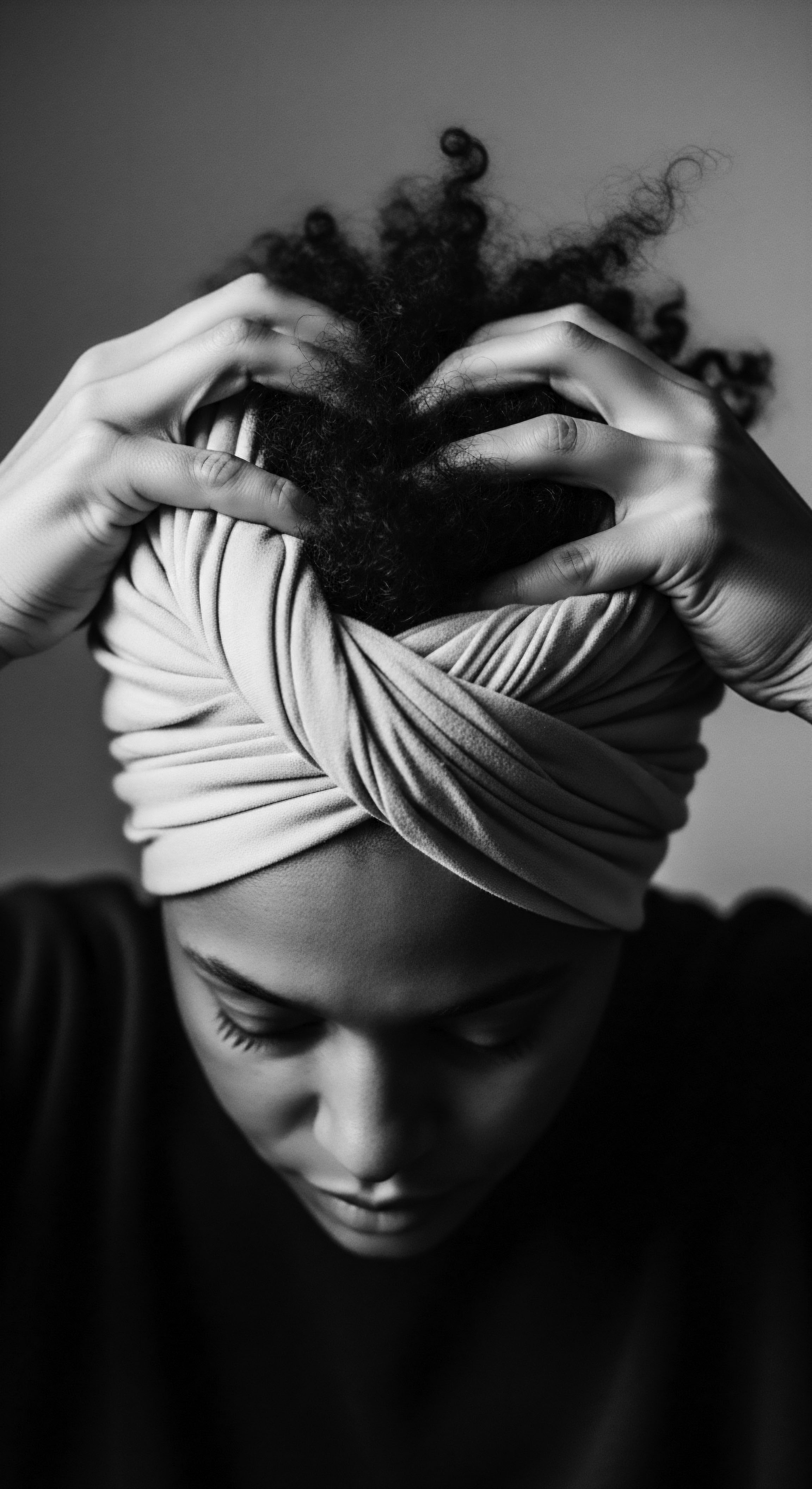
Tools of the Night ❉ From Ancestral Hands to Modern Silk
The tools used in nighttime hair preparation have evolved, yet their fundamental purpose remains consistent ❉ protection. In earlier times, these tools might have included finely crafted combs made from wood or bone, used gently to detangle before braiding, and natural fibers woven into protective coverings. The use of headwraps, or ‘dukuk’ and ‘doek’ in various African cultures, has a history spanning centuries, reflecting wealth, marital status, and even emotional states. While their public display held cultural significance, their role in nightly hair preservation was equally vital.
| Historical Practices Headwraps and cloths of natural fibers to secure and protect hair from environmental elements and friction. |
| Modern Applications Silk or satin bonnets, scarves, and pillowcases, chosen for their smooth surface to reduce friction and moisture loss. |
| Historical Practices Application of plant-based oils and butters (e.g. shea butter, coconut oil) to nourish and seal hair before covering. |
| Modern Applications Use of leave-in conditioners, hair milks, and specialized hair oils to hydrate and protect strands overnight. |
| Historical Practices Intricate braiding or twisting patterns (e.g. cornrows, Bantu knots) to minimize manipulation and maintain style. |
| Modern Applications Modern protective styles like braids, twists, and flexi-rod sets, preserved overnight to extend longevity and definition. |
| Historical Practices The continuity of these practices underscores a timeless dedication to preserving the health and vitality of textured hair, honoring its heritage through nightly care. |
The modern iteration of these protective tools, the silk or satin bonnet, carries this ancestral legacy forward. These smooth fabrics minimize friction between the hair and pillowcases, preventing the rough abrasion that leads to frizz, breakage, and loss of moisture. This scientific understanding of friction’s impact on the hair cuticle validates centuries of intuitive practice. The widespread adoption of bonnets and silk pillowcases within Black communities, in particular, speaks to a collective knowledge passed down through generations—a testament to the enduring importance of nightly hair protection for textured hair.
As one account notes, for many Black women, covering hair at night is a rite of passage, passed down from mothers, helping to prioritize hair health and preserve natural oils and styles (Sleep.com, 2021). This ritual is not just about hair; it is about self-care, cultural affirmation, and a connection to a lineage of resilience.
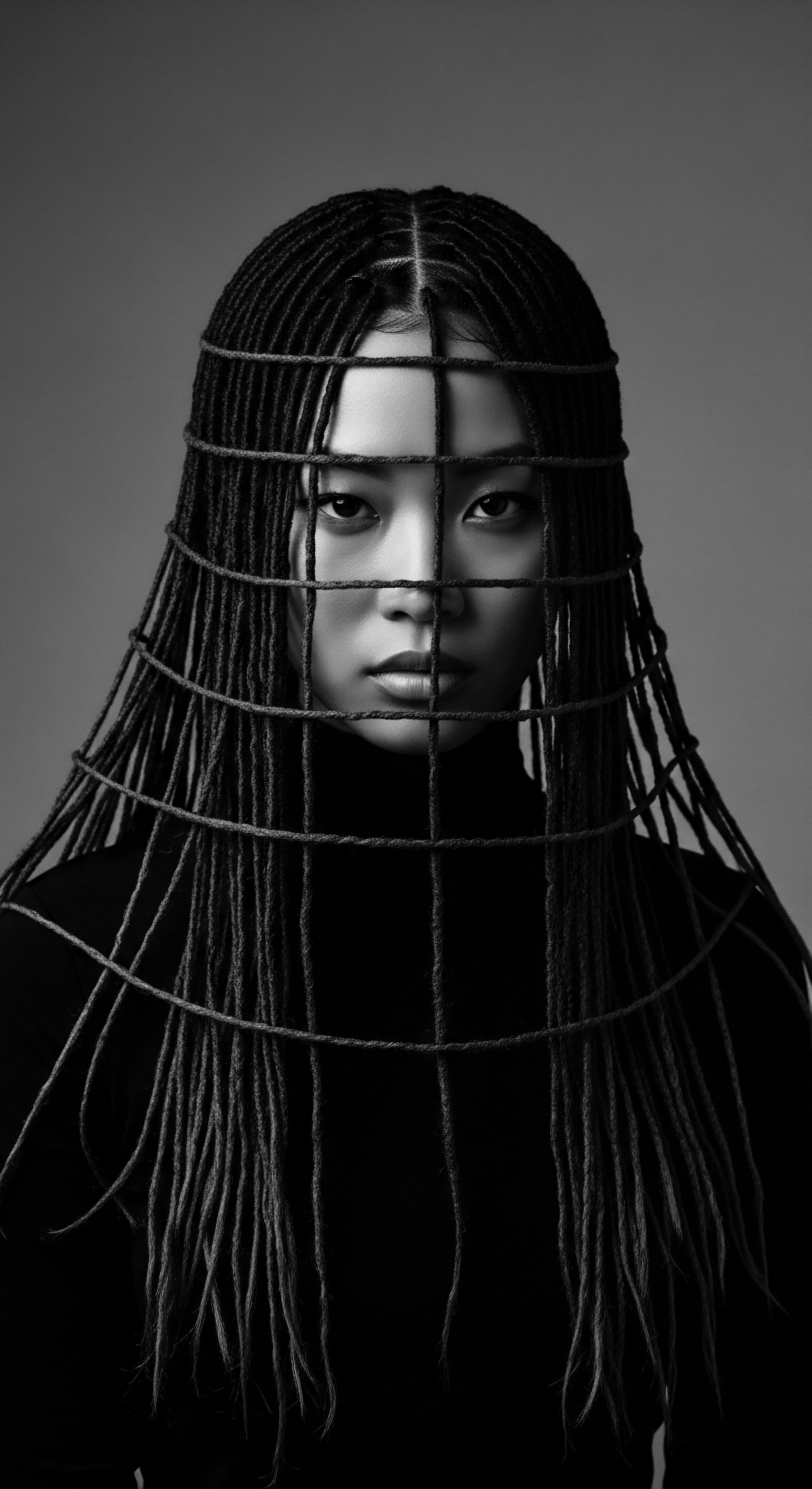
Relay
How does the profound quietude of sleep, a seemingly simple biological imperative, reverberate through the intricate history and future of textured hair? This question beckons us into a more sophisticated understanding, where the elemental act of rest intersects with deep cultural narratives, scientific intricacies, and the enduring legacy of textured hair care. It is a space where the wisdom of the past illuminates contemporary challenges and shapes the contours of future hair traditions.
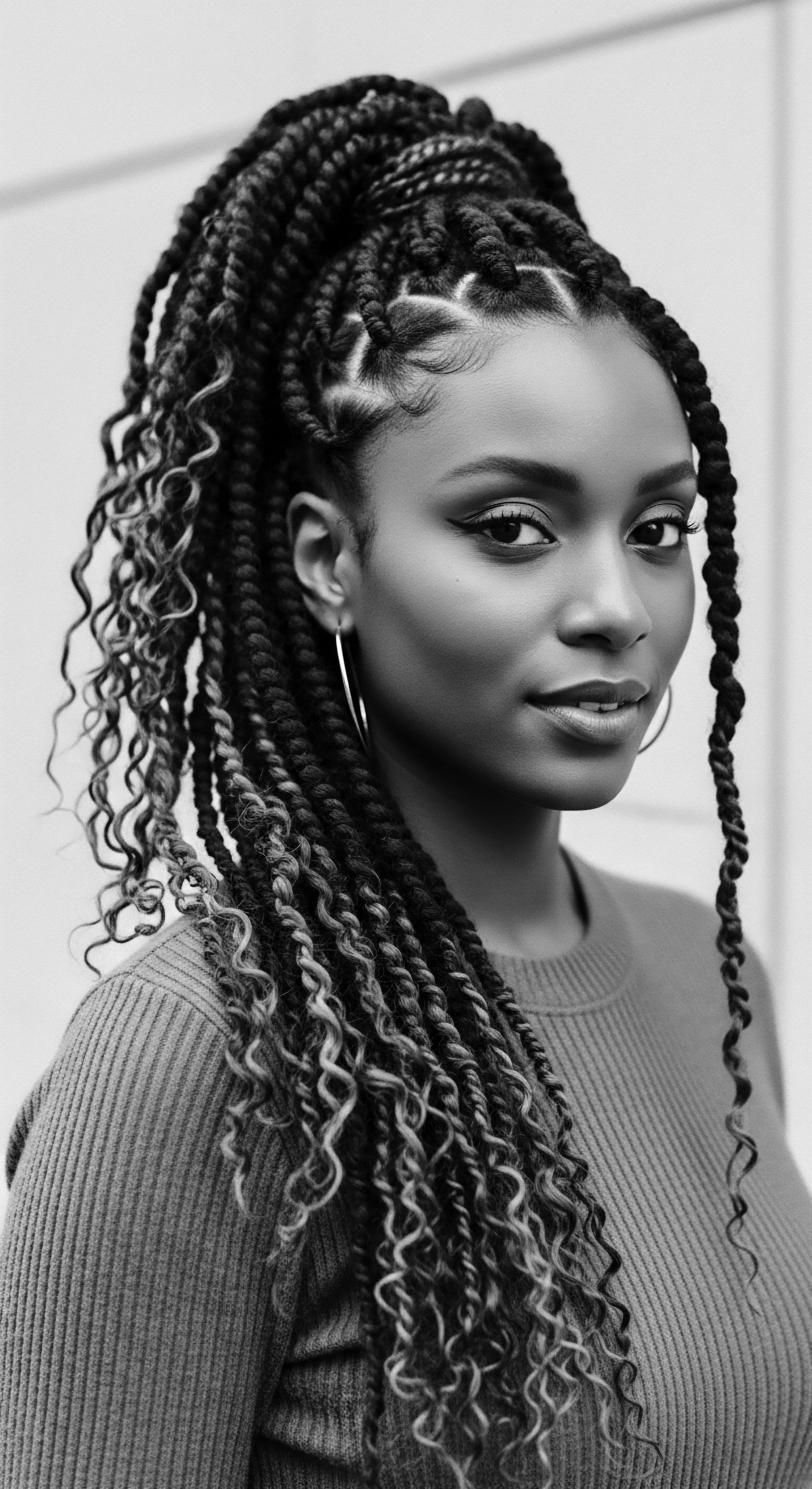
Sleep’s Biological Blueprint and Hair’s Vulnerability
At a biological level, sleep is a period of repair and restoration for the entire body, and the hair and scalp are no exception. During deep sleep, the body’s metabolic processes shift, prioritizing cellular regeneration. Blood flow to the scalp, which delivers essential nutrients and oxygen to hair follicles, remains consistent or even increases, supporting the hair growth cycle. However, it is the external forces encountered during sleep that pose the most significant challenge to textured hair.
The friction against rough surfaces, such as cotton pillowcases, can physically abrade the hair’s delicate outer layer, the cuticle. This mechanical stress can lead to raised cuticles, making the hair susceptible to moisture loss and tangling. When the hair’s natural moisture balance is disturbed, it becomes dry, brittle, and prone to breakage, especially at the ends.
For individuals with textured hair, whose strands are already more prone to dryness due to the winding path of natural oils along the coiled shaft, this nocturnal moisture depletion is particularly detrimental. A study by Khumalo and Jessop (2014) highlights that textured hair is inherently fragile, making proper care during sleep critical to mitigate damage and potential traction alopecia, a form of hair loss often associated with prolonged tension or friction on the hair follicles. This scientific understanding provides a contemporary lens through which to appreciate the centuries-old practices of protecting textured hair at night.
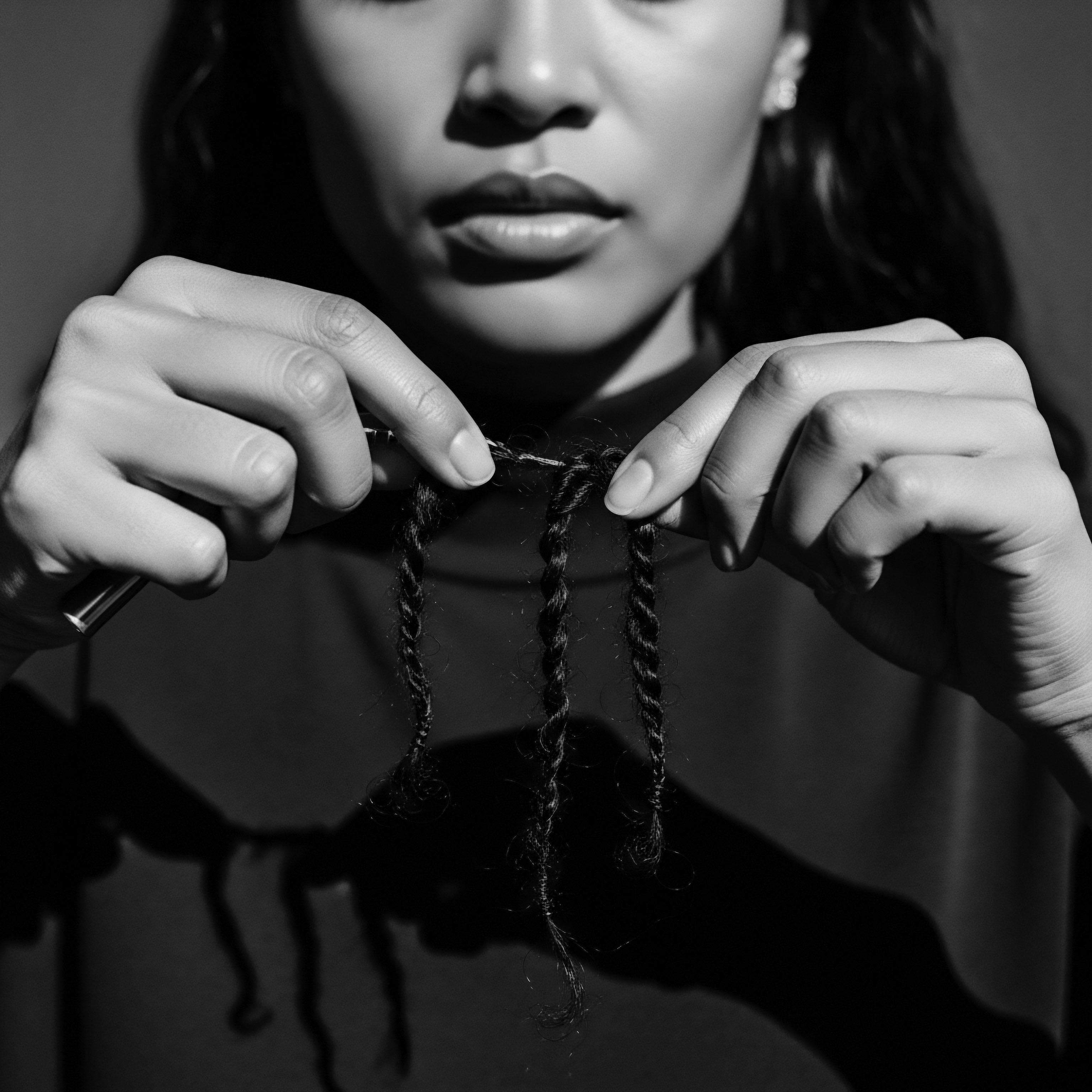
Ancestral Nighttime Rituals ❉ A Heritage of Protection
The practice of protecting hair during sleep is not a modern innovation but a deep-rooted aspect of textured hair heritage, especially within Black and mixed-race communities. Historically, this practice was born from both necessity and a profound respect for hair as a cultural and personal asset. In many African societies, hair was a powerful symbol of identity, status, spirituality, and even resistance. The care given to hair, including its protection at night, was a ritualistic act that affirmed self-worth and communal ties.
During the transatlantic slave trade and subsequent periods of enslavement, the deliberate stripping of cultural practices extended to hair. Enslaved Africans were often forced to cut their hair or were denied the tools and time for proper care. In this context, the act of covering one’s hair at night, often with rudimentary cloths or scarves, became a quiet yet powerful act of defiance.
It was a way to preserve a piece of self, a link to ancestral traditions, and to protect hair from the harsh realities of forced labor and unsanitary conditions. As noted by Donaldson, headwraps and bonnets were weaponized during enslavement to distinguish Black women as lesser, yet these same coverings were reclaimed as forms of creative and cultural expression and as tools for hair preservation (Byrdie, 2022).
The evolution of the bonnet, from practical head coverings in pre-colonial Africa to a symbol of resilience and self-care in the diaspora, underscores its deep cultural significance. Initially crafted from available fabrics, these coverings provided essential protection against friction and environmental elements. The transition to smoother materials like silk and satin in more recent times reflects a refinement of this ancestral wisdom, leveraging modern understanding of fabric properties to optimize hair health.
The nightly ritual of hair protection, a legacy from ancestral practices, represents a powerful act of self-preservation and cultural continuity.

The Bonnet’s Silent Testimony ❉ Cultural Resilience
The bonnet, often seen as a simple sleep accessory today, carries a complex history of cultural resilience and identity for Black women. Its widespread use is a testament to generations of collective wisdom regarding textured hair care. While bonnets gained popularity among European women in the mid-1800s for warmth and modesty, their adoption and transformation within Black communities tell a different story.
In the early 20th century, as Eurocentric beauty standards often devalued natural textured hair, the bonnet served as a practical tool to preserve straightened styles achieved through hot combs or chemical relaxers, thereby extending the time between demanding styling sessions (Annie International, 2023). With the rise of the natural hair movement in the 1960s and beyond, the bonnet’s purpose broadened to protect and maintain natural curls, coils, and protective styles like braids and locs. This shift underscored its adaptability and enduring relevance across different eras of Black hair expression.
Beyond its functional role, the bonnet also carries a profound psychological and social weight. It represents a space of intimacy and self-care, a moment of reprieve from societal scrutiny of Black hair. The act of donning a bonnet before sleep is an affirmation of self-love and a quiet act of defiance against beauty norms that have historically marginalized textured hair. It is a tradition passed from mother to daughter, embodying a collective understanding of hair’s sacredness and the importance of its preservation.
Dayna A. Johnson, a professor researching sleep health disparities, highlights how factors like racism and discrimination contribute to poorer sleep quality among Black women, making acts of self-care like hair wrapping even more vital for peace of mind (Sleep.com, 2021). This underscores the holistic impact of sleep protection on wellbeing.
- Friction Reduction ❉ Silk or satin fabrics minimize rubbing against hair strands, preventing cuticle damage and frizz.
- Moisture Retention ❉ The smooth surface helps hair retain its natural oils and applied products, combating dryness.
- Style Preservation ❉ Protective coverings help maintain hairstyles (braids, twists, blowouts) for longer, reducing daily manipulation.
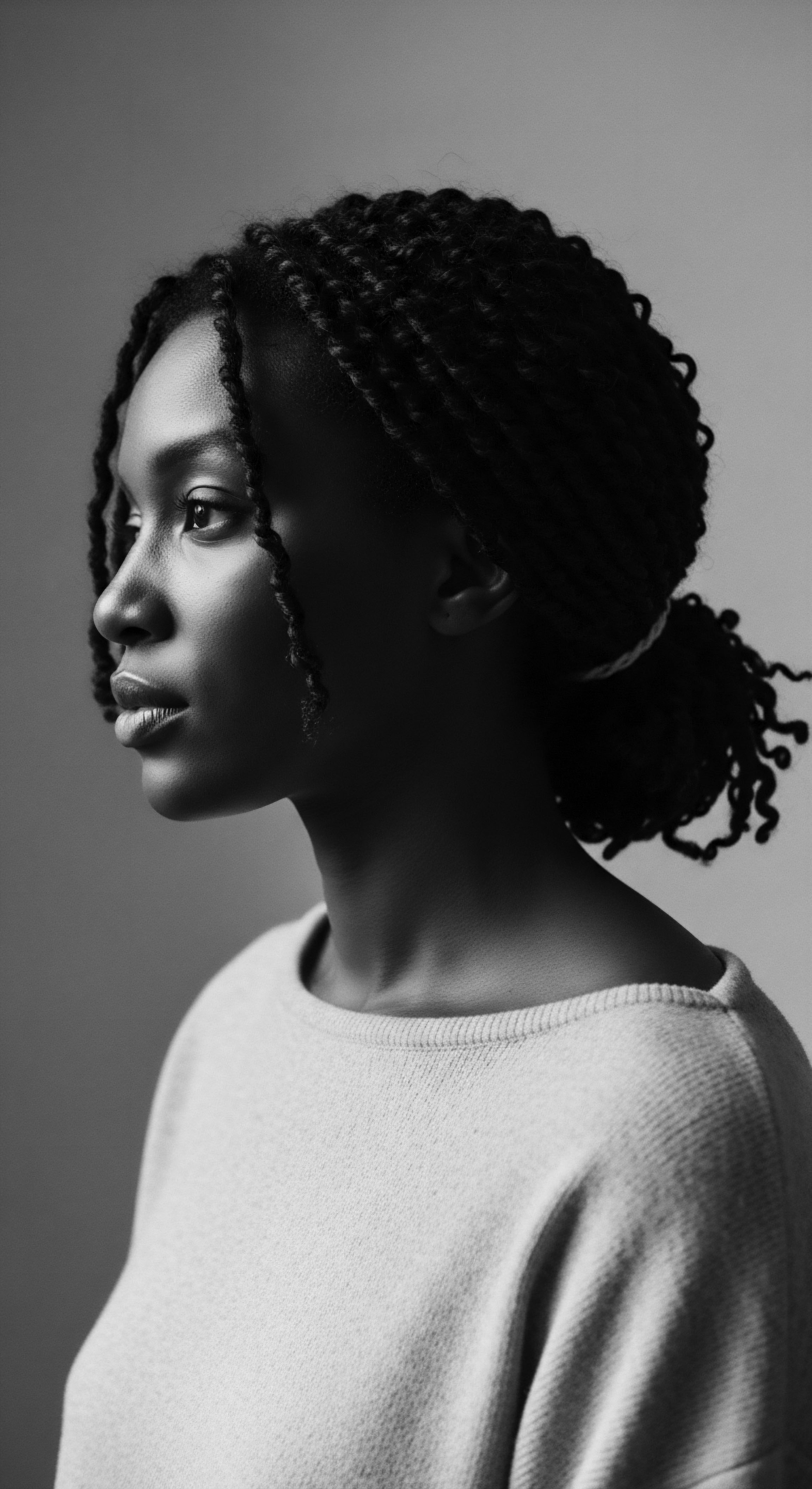
Holistic Wellness and the Nightly Reset
The influence of sleep on textured hair extends beyond mere physical protection; it touches upon the very core of holistic wellness. Ancestral wisdom consistently linked physical health, spiritual well-being, and outward appearance. A healthy scalp and vibrant hair were seen as reflections of inner harmony.
Modern science now validates many of these long-held beliefs, showing the intricate connections between sleep quality, stress levels, and hair health. Poor sleep can disrupt hormonal balance and increase cortisol levels, which in turn can impact hair growth cycles and overall hair vitality.
The nightly hair care ritual, steeped in heritage, becomes a mindful practice that prepares both hair and spirit for rest. It is a time for gentle detangling, the application of nourishing oils or conditioners, and the careful securing of hair in a protective style or covering. This intentional slowing down, a departure from the day’s demands, contributes to a sense of calm that aids in deeper, more restorative sleep.
For many, this ritual is not just about avoiding frizz; it is about honoring a lineage of care, reclaiming agency over one’s body, and participating in a continuous dialogue with ancestral wisdom. It is a moment to connect with the past, grounding oneself in traditions that affirm the beauty and resilience of textured hair.
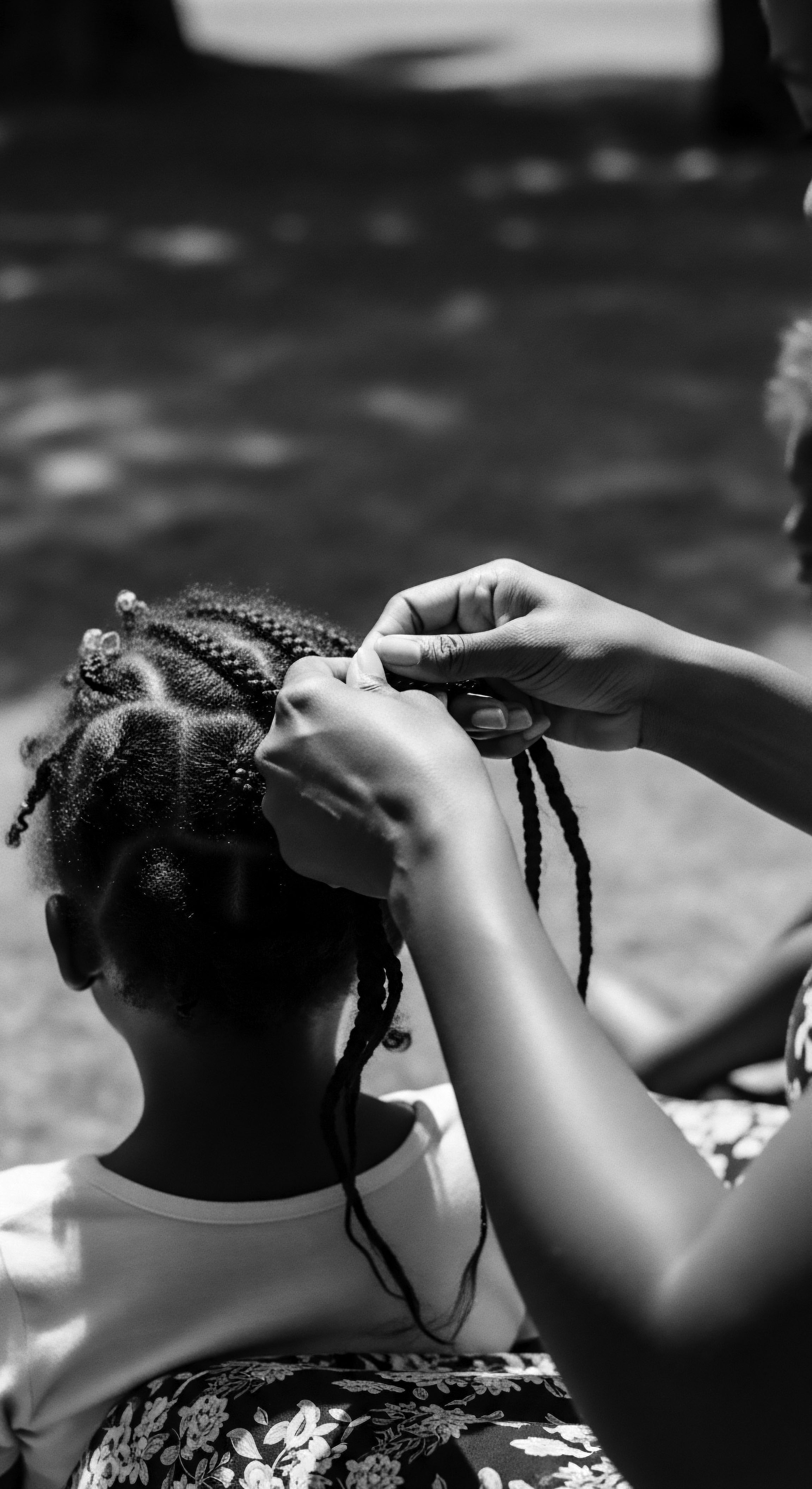
Reflection
The journey through how sleep affects textured hair, seen through the profound lens of heritage, brings us to a quiet realization ❉ the nightly ritual is far more than a practical measure. It is a living archive, a continuous conversation between past wisdom and present care. Each carefully wrapped strand, each bonnet donned, echoes the resilience of those who came before, who understood the sacredness of their hair even when faced with unimaginable adversity.
The wisdom of our ancestors, passed down through generations, taught us that even in the quiet hours of rest, our hair deserved protection, nourishment, and respect. This understanding, born from observation, necessity, and an enduring connection to self, laid the groundwork for the practices we observe today.
In this continuum of care, the simple act of preparing textured hair for sleep becomes a profound meditation on identity, continuity, and self-worth. It reminds us that our strands carry not just biological information, but the very soul of a lineage—a heritage that remains vibrant, adapting, and ever-present in the gentle rustle of a silk bonnet against a pillow.

References
- Byrd, A. D. & Tharps, L. D. (2001). Hair Story ❉ Untangling the Roots of Black Hair in America. St. Martin’s Press.
- Khumalo, N. P. & Jessop, S. (2014). Traction alopecia ❉ how to translate study data for public education ❉ closing the KAP gap? Dermatologic Clinics, 32(2), 153–161.
- Annie International, Inc. (2023, December 21). The Origin Story Of The Bonnet .
- Hype Hair. (2023, June 26). Unveiling the History of the Hair Bonnet for Black Women .
- Byrdie. (2022, September 27). The Significance and History of Bonnets .
- Sleep.com. (2021, September 3). How a Hair Wrap Routine Protects More Than Just My Hair .
- Esme Luxury. (2024, August 6). Silk Hair Wraps in Different Cultures ❉ A Global Perspective .
- ResearchGate. (2009). Hair Care Practices in African-American Patients .
- Deerfield Academy. (2022, July 12). Black and Beautiful ❉ Satin Bonnets for Hair Repair .
- EliScholar. (2023, May 12). The Development Of A Self- Esteem Toolkit For Black Adolescent Girls Centering Hair As A .
